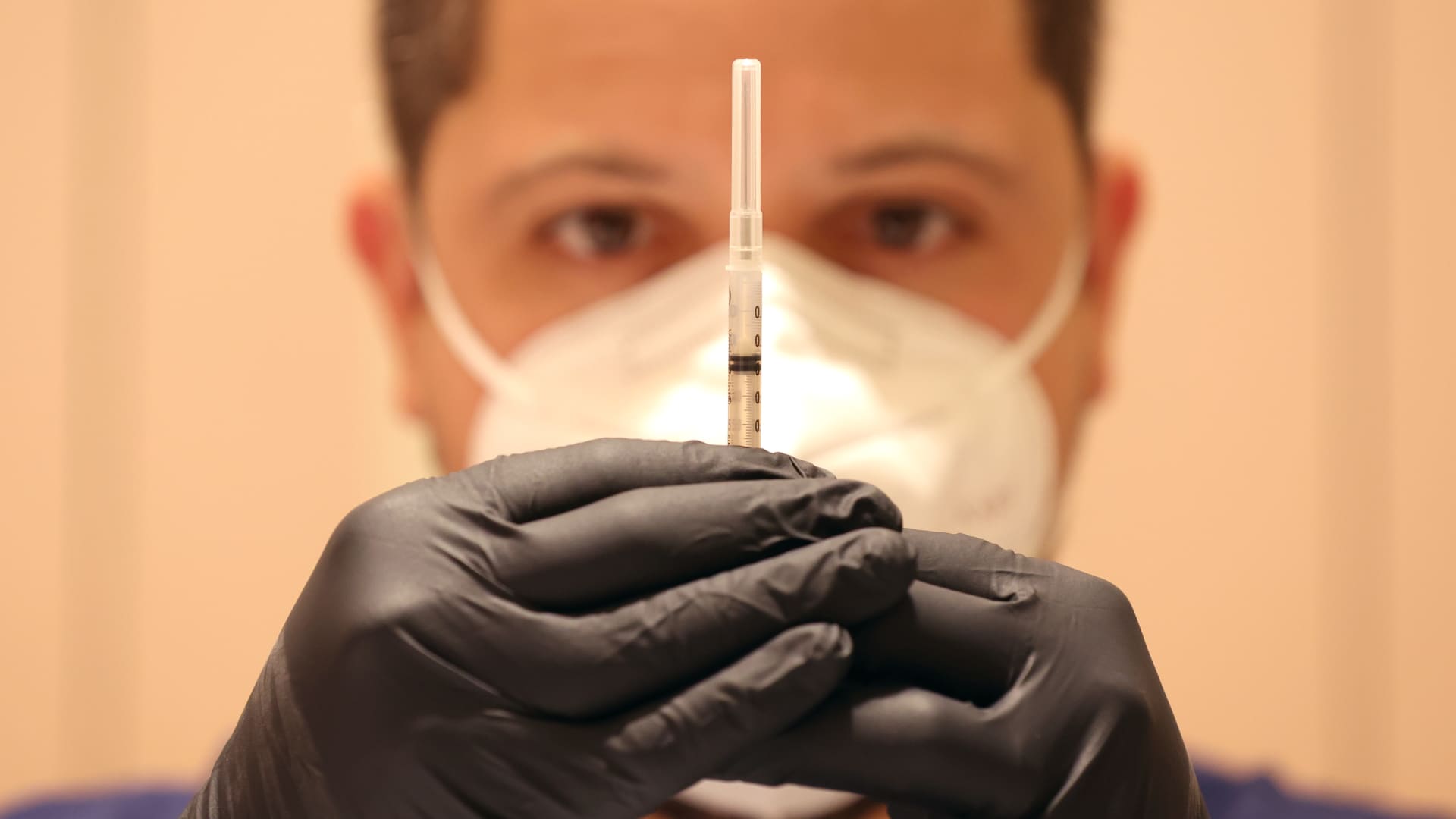The Food and Drug Administration on Thursday said vaccine manufacturers should update their Covid-19 booster shots to target the most recent omicron subvariants that are gaining ground in the U.S.
Dr. Peter Marks, head of the FDA’s vaccine division, said manufacturers should update their shots to target omicron BA.4 and BA.5 in addition to the original strain of the virus that first emerged in Wuhan, China in 2019.
The FDA wants to update the booster shots to provide more durable protection ahead of the fall, when public health experts expect another wave of infection as immunity from the vaccines wanes and people head indoors to escape the weather. Covid spreads more easily indoors.
The two dose primary vaccination series will not change for now, Marks said. In other words, people who are fully vaccinated will not start from scratch in the fall. They would simply receive an omicron shot to increase their protection against the virus. And people who are not yet vaccinated will get two doses of the original vaccine first, and then a jab with the new version.
The FDA’s panel of independent experts voted overwhelmingly on Tuesday to recommend a vaccine switch after an all-day meeting in which they evaluated the benefits and downsides of updating the shots.
The vaccine makers are having trouble keeping up with the rapid evolution of the virus. Pfizer and Moderna developed their omicron shots to target the original version of the variant, BA.1., which caused the massive wave of infection over the winter.
But BA.1 has been pushed out by other omicron subvariants and is no longer circulating in the U.S. Omicron BA.4 and BA.5 now make up more than 50% of Covid infections in the U.S., according to the Centers for Disease Control and Prevention.
Pfizer and Moderna presented clinical trial data on Tuesday demonstrating that their updated shots triggered a stronger immune response against omicron BA.1 than the original version of the vaccines that the FDA authorized for use in December 2020. The updated shots, based on BA.1, did not perform as well against BA.4 and BA.5 though the immune response was still robust.
The studies were small with only a few hundred participants, and there’s currently no data on how well the shots will perform in the real world. The immune response is generally viewed as a good indicator of how well the vaccines will protect against illness.
It’s unclear how long it will take the vaccine makers to switch gears and develop shots that include BA.4 and BA.5 rather than the original version of omicron. The FDA has asked the companies to start clinical trials on these newer subvariants, Marks said. The FDA panel of experts generally favored targeting BA.4 and BA.5 in effort to keep up with the evolution of the virus.
All of the currently authorized Covid vaccines are based solely on the original version of the virus that emerged in China more than two years ago. The shots are no longer providing the same level of protection against infection and mild illness because the virus has changed so much. They are still generally preventing severe disease, though there’s concern this protection will also wane.
The virus has a protein called a spike that it uses to invade human cells. The current shots use copies of the spike from the original version of the virus to trigger an immune response that protects against illness. However, the protective antibodies triggered by the vaccines are having difficulty recognizing the highly mutated versions of the spike on the omicron subvariants.
